On an April afternoon in the Book Arts Lab on the fourth floor of Clapp Library, Jingyi Dai ’22 and Sarah Pardo ’22 lean over a Vandercook press, making small adjustments to large wooden type. They are each printing a poster with a positive message: Dai’s reads “There Will Be Another Day,” with a layout inspired by the iconic World War II-era “Keep Calm and Carry On” poster. Pardo’s proclaims “Women Who Will,” no explanation necessary.
The hum of the 750-pound motorized press, built circa 1963, doesn’t quite drown out the sound of “Toxic” by Britney Spears, which plays on a radio set to WZLY. Pardo and Dai loosen a quoin (a device for locking up type) so they can adjust the furniture (wooden blocks that hold the type in place) to correct the margins on Pardo’s print. They struggle a bit to get the paper positioned properly on the cylinder of the press, but after a slight adjustment from their teacher, Katherine Ruffin, director of the Book Studies Program, they get rolling.
Dai takes her hand off the wooden crank and examines her fingers, which are stained red from ink. “If I come to Quidditch with my hands like this, they’re all going to be very concerned,” she says with a laugh. Dai, however, doesn’t look bothered. Rather, like the 15 other first-year students taking ARTS 115 Word and Image Studio who are busy cranking out their posters, she looks completely engaged, caught up in the collaborative work of printmaking, and pleased with her work.
The learning experience that students and other members of the Wellesley community have in the Book Arts Lab, which celebrates its 75th anniversary this year, is a fairly unusual one in our increasingly wired world, and one that people crave, says Ruffin.
“The digital realm is amazing, but we’re interacting with screens so much that I think we’re hungry for the tactile experience that books and paper can offer us,” she says. “When people do have that haptic encounter—they’re cranking the press, they’re seeing how the rollers put ink on the faces of the type, then how that ink is transferredto paper and … creates a little bit of an impression from where the paper was pressed down on the face of the type—they respond very viscerally to all that. And feelings of agency and ownership follow very quickly.”

Katherine Ruffin, director of the Book Studies Program, speaks with a student.
From its humble beginnings in 1944, when research librarian Hannah Dustin French bought a 19th-century iron hand press and moved it into the basement of the library, the Book Arts Lab has grown into a busy, well-equipped studio for both historical scholarship and studio artwork. Ruffin teaches three for-credit courses: Word and Image Studio, Introduction to Book Studies, and a 200-level studio art course, Introductory Print Methods: Book Arts and Typography.
She collaborates closely with Special Collections—which holds rare books, manuscripts, and limited editions—down the hall. Since the Book Arts Lab’s founding, hands-on work has been tightly interwoven with the study of historical and contemporary printed books. Professors from departments ranging from classical studies to astronomy bring their students to the lab for demonstrations or exercises as part of their classes, and the lab also regularly hosts workshops open to the entire Wellesley community. Students who encounter the Book Arts Lab in their classes often return to do more work. “I just had three students from an advanced Spanish class come back to the lab after making a midsemester class visit and set type and print their own broadsides for their final projects,” says Ruffin.
“If Hannah French could see what her vision became … the intensely busy Book Arts Lab, and library staff teaching Book Arts and History of the Book for credit, she’d be floored,” says Ruth Rogers, curator of Special Collections.
Press Pioneer
Hannah French was a librarian who, early in her career, developed an interest in book making and rare books. As part of her master’s degree in library service at Columbia, she became an expert on early American bookbinding by hand. After several years at the College, during which Wellesley hosted an event to celebrate the 500th anniversary of the invention of printing, French was delighted to find that Wellesley was supportive of her vision to create a book arts lab.
“In 1942 the idea of a Book Arts Laboratory at Wellesley was sponsored by President McAfee, funded by Annis Van Nuys Schweppe ’03 [Wellesley College class of 1903] and developed by Miss McCrum [French’s supervisor]. Accordingly I was given the extraordinary command to find and purchase equipment for a Book Arts Laboratory for student use,” French wrote. (Ruffin researched the history of the Book Arts Lab as part of her doctoral dissertation at Simmons, the source of this quote.)
French was tenacious in her pursuit of a press and equipment. Luckily, her connections in the bibliophile world in New England and beyond served her well, and within a couple years, she was able to secure a flat-bed iron press and some type. She also spent a week studying typesetting and papermaking with Carl Purington Rollins, who started a teaching press in affiliation with the Yale University Libraries, at his home press in New Haven, Conn.
Soon after, French opened Wellesley’s Book Arts Laboratory to students. The lab was open on Thursdays, and students ventured into the library’s basement to print bookplates, poems, theater programs, and greeting cards. French also ran a noncredit book arts seminar, which she taught in the Book Arts Lab and in what is now called Special Collections, which she also oversaw. The course helped inspire at least one alumna to pursue book arts as a career—Betsy Palmer Eldridge ’59 went on to become an accomplished bookbinder, receiving lifetime achievement awards from both the American Guild of Book Workers and the Canadian Bookbinders and Book Artists Guild.
The Book in the 21st Century
Over the decades, the lab made two moves. First, it relocated to the cozy attic annex of Special Collections, and then, in 1973, the year after French retired, it moved into its current home, a bright and spacious room on the fourth floor of the library, near Wellesley College Archives, the Conservation Facility, and Special Collections. The press itself was named the Annis Press, after Annis Van Nuys Schweppe, class of 1903.
A number of instructors taught in the lab in the ’70s, and in 1977, Marilyn Hatch began working in Special Collections. As part of the job, she learned how to do letterpress, and after several years, she took over the Book Arts Lab. “I’ve always liked craft work and artistic work, took lots of workshops and various kinds of things, but being exposed to all the manuscripts and books in Special Collections made me go and learn calligraphy. So the combination of calligraphy and letterpress finally made me realize that my genre was book arts. And so Wellesley really changed my life,” Hatch says.
In addition to teaching letterpress, Hatch began to integrate innovative structures and approaches used in artists’ books into the lab’s offerings. Ruffin explains that Hatch was responding to the way Special Collections was growing and adding artists’ books—which meld word, image, color, and texture to make books as art—to the collection. “She was … building out the curriculum, adding on to the curriculum [in the Book Arts Lab] in a parallel way,” Ruffin says. In 1998, the lab began its first foray into for-credit courses, offering a half-credit studio art course, Book Arts Studio, taught by Hatch and Rogers—a modern version of French’s course.
As Hatch was preparing to retire in late 1999, Katherine Ruffin visited Special Collections to show Rogers the artists’ books she had been making. Ruffin had an undergraduate degree in philosophy from Bryn Mawr and an M.F.A. in book arts from the University of Alabama’s School of Library and Information Studies, and had been doing work at Harvard’s Bow & Arrow Press at Adams House. Hatch remembers, “We were showing her the Book Arts Lab, [when] Ruth just sort of casually said that I would be leaving, and would Katherine be interested, and Katherine leapt. And she was perfect. I swear that it is a charmed position, because I came when I was needed, and then Katherine came just when she was needed.”

A Plugged-In Lab
In 2000, the Book Arts Lab went electric, with the addition of a motorized Vandercook press, which allowed more students to print with more autonomy. “I knew that if we wanted to increase the volume of people doing work in Book Arts Lab, we had to have a Vandercook press. So Marilyn took to the idea, and we thought it was pretty significant that we were going to plug in our first press around the changing of the millennium. It was a perfect opportunity for the Friends of the Library to give it in honor of Marilyn Hatch, who was retiring,” Rogers says.
Another big leap for book arts happened in 2002 when Rogers, inspired by a conference she attended on the printing press as part of a long history of writing and communication, created a course called Papyrus to Print to Pixel, which she team-taught with Raymond Starr, professor of classical studies, and Ruffin. “It was a very ambitious experimental class that attempted to cover 5,000 years of written communication in the West in two lectures and one lab per week,” says Ruffin. “So we did everything from make papyrus and look at the papyrus fragments in Special Collections to make hypertext versions of rare books from Special Collections, which in that decade, the first decade of the 21st century, was very ambitious and interesting work.” The course was offered three times in the ’00s. “It was a great model of collaboration and co-teaching. There was so much excitement, it almost became a cult,” Rogers says.
Mary Hamilton French ’09, a book and manuscript conservator who works at Northeast Document Conservation Center (NEDCC) in Andover, Mass., took Papyrus to Print to Pixel in 2008. She recalls growing papyrus in the greenhouses, cutting letters into stone, writing and illuminating text on parchment, casting hot-lead type, and printing a section of text from the Nuremberg Chronicle, among other things.
“It’s been more than 10 years since I took that class, but I can still remember every single moment of it so clearly. It was really a dream come true for me to be able to put into practice the theoretical concepts that I was learning about in the class, and it confirmed for me that I wanted to become a book conservator so that I could spend every day working with historic books,” she says. That’s exactly what she does now at NEDCC. She even recently worked on a scrapbook containing the original architectural drawings of Wellesley’s College Hall by Hammatt Billings, which the College acquired last year. “It was profoundly moving to me to work on such an important piece of Wellesley history, since I very much owe my career in conservation to the excellent instruction and mentorship I received while working in the Book Arts Lab and conservation departments.”
Since Papyrus to Print to Pixel, both Rogers and Ruffin have taught their own for-credit courses, expanding the offerings in book studies. In all their courses, there is a constant flow between the Book Arts Lab and Special Collections. Rogers says that in her 200-level course, History of the Book from Manuscript to Print, students make paper with Ruffin in the papermaking facility in Pendleton West, and also learn how to set type in the Book Arts Lab. “In grading midterms now, I can see directly the effect that that has had on them,” Rogers says. “One student was able to say, you know, I know this book is in quarto format. The watermark is in the gutter, and the chain lines are horizontal. … The hands-on process has had a direct effect on their intellectual understanding. That was always Hannah French’s vision.”
Another milestone for the Book Arts Lab was the 2005 creation of an endowed position for the Book Arts Program Director, held by Ruffin, thanks to a generous gift from three alumnae. “The fact that the funding is secure and based in the library is significant, and has been something that many librarians, administrators, Friends of the Library, and donors have worked together to secure,” Ruffin says. The fact that the lab is based in the library instead of in, say, the English department or art department, means that Ruffin is better able to reach into many different departments across campus.
“I think Hannah French would walk in the door of the library and immediately feel at home and very proud if she walked into some kind of book studies activity, because it is the way we have broadened her vision to increase an intellectual engagement with our collections and our facilities, for people from classics to computer science, from first-year students to very senior professors,” says Ruffin. If French were to walk in on Word and Image Studio on an April afternoon in 2019, there is much that she would recognize—not least of which is the excitement on students’ faces when they pull their prints off the presses and become connected to the written word in an entirely new way.
Lisa Scanlon Mogolov ’99 is a senior associate editor at Wellesley magazine.




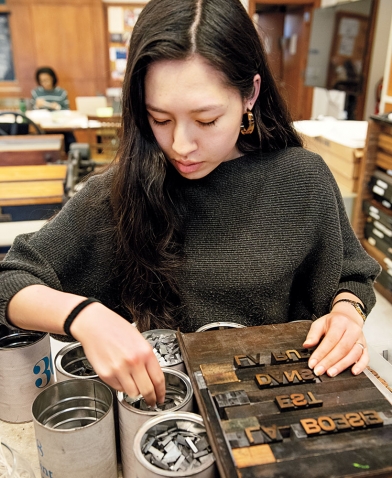

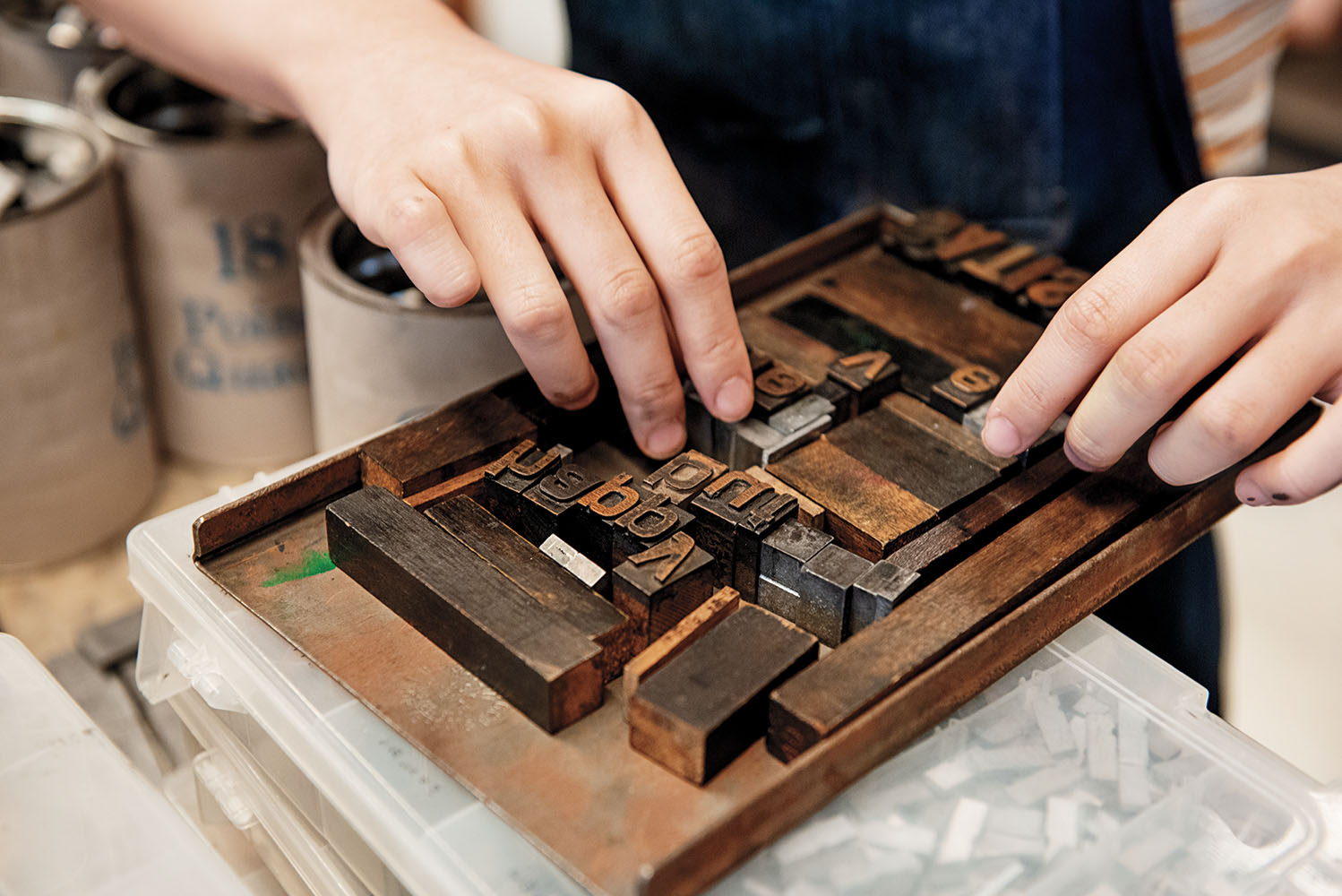
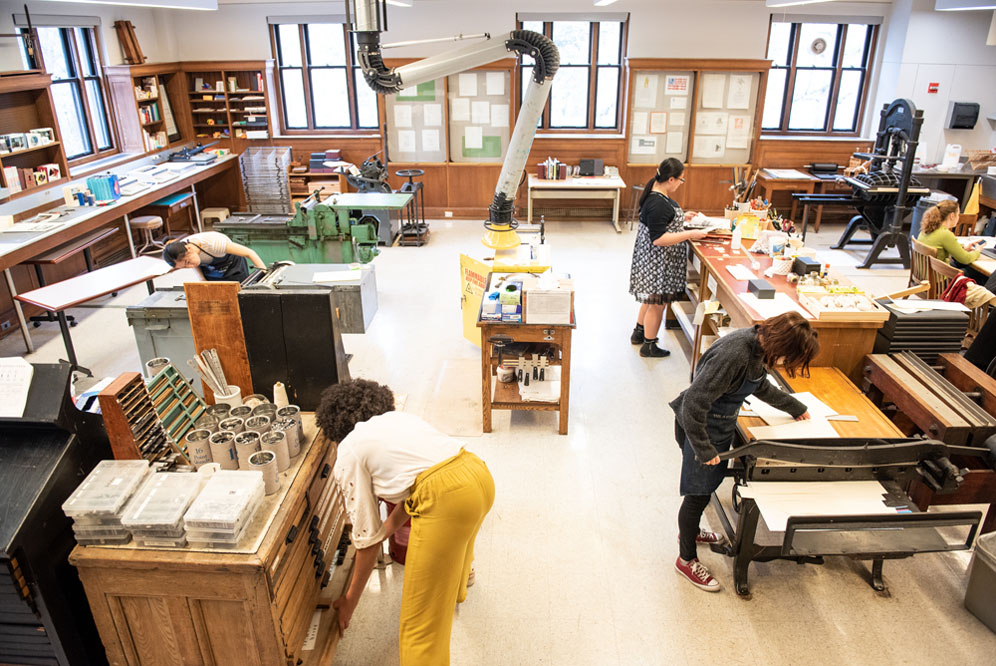
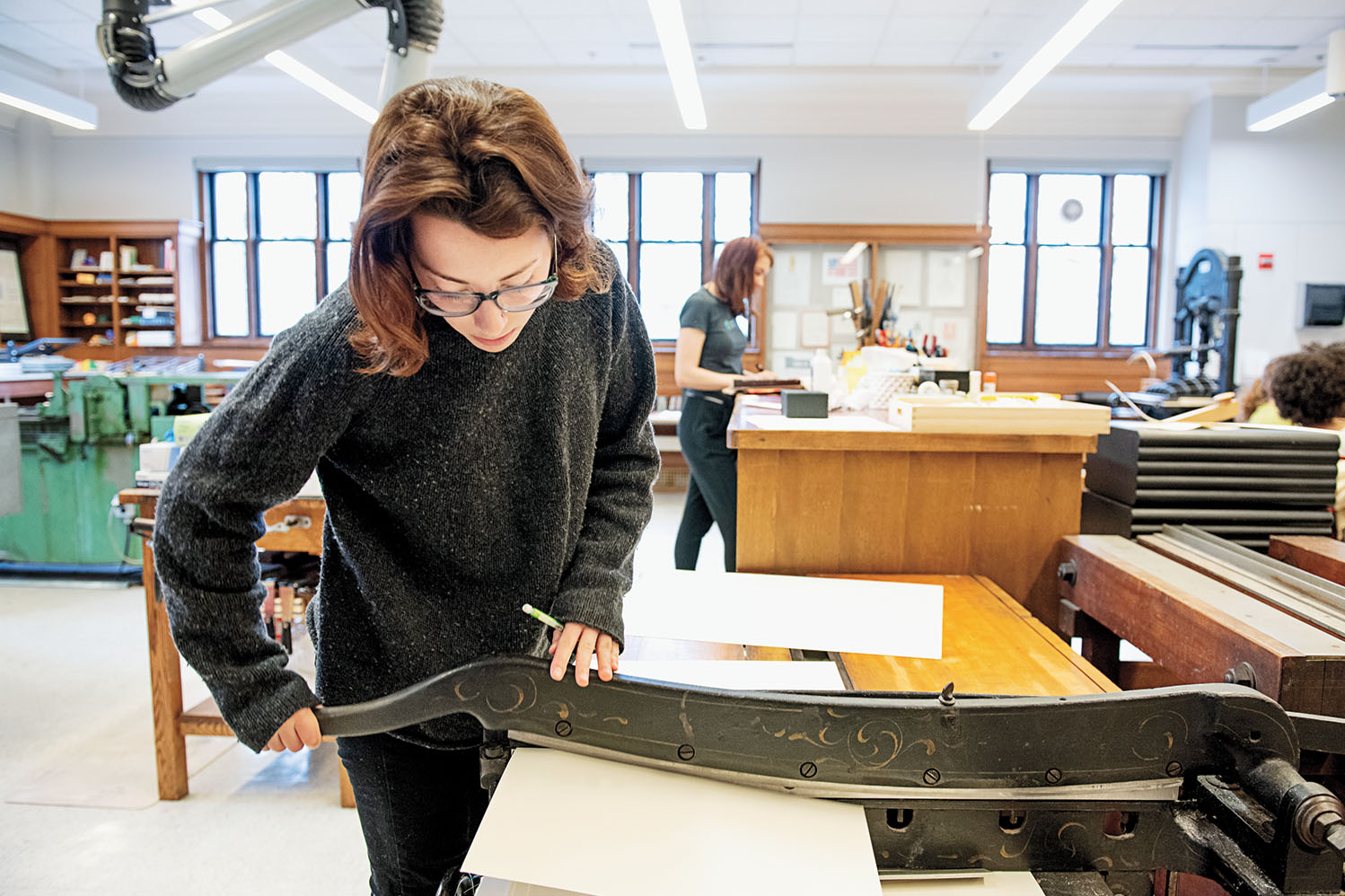



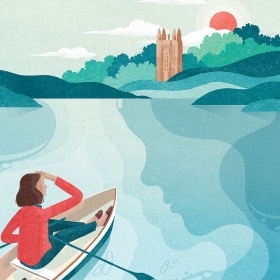
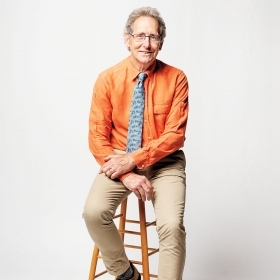
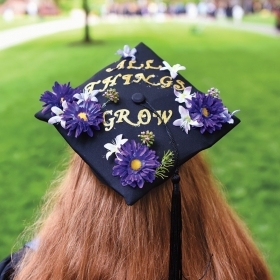
We ask that those who engage in Wellesley magazine's online community act with honesty, integrity, and respect. (Remember the honor code, alums?) We reserve the right to remove comments by impersonators or comments that are not civil and relevant to the subject at hand. By posting here, you are permitting Wellesley magazine to edit and republish your comment in all media. Please remember that all posts are public.